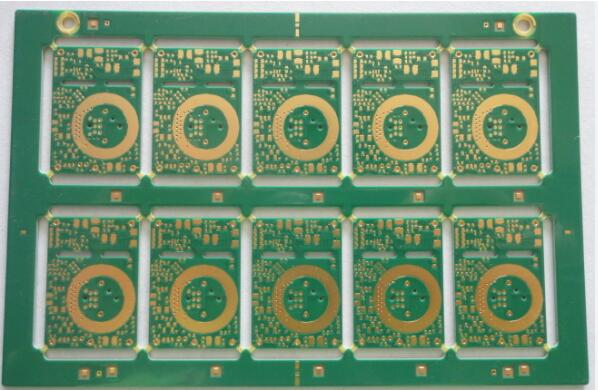In electronics, PCB is an informal term, while printed circuit board or PWB is a more accurate term, but as the concept between circuit and wiring becomes blurred, this term becomes less and less common. PCB refers to a conductive path, track, or signal wiring etched through copper sheets on a non-conductive substrate to support and electrically connect electronic components. We can understand PCB as the carrier of components. The reason why electronic products can function is to connect electronic components through the wiring on the PCB board, achieving electrical connections between components.

PCB in electronics
When you search for "What does PCB mean" on Google, Google will also push you to "What is PCBA". Although PCB and PCBA have only one-word differences, their meanings are completely different. A PCB represents a bare board, a green board with no functions or components. PCBA means PCB assembly, where components are installed on bare boards using assembly techniques such as SMT and THT.
What are the application areas of PCB?
1. Medical equipment PCB
With the development of the PCB manufacturing industry, the progress of medical technology is also evident to all. Looking back at the past, in an era of underdeveloped technology, doctors used artificial pulse signals to determine the patient's condition by observing text and facial expressions. However, it is now possible to use tiny medical electronic devices injected into the human body to observe the condition of patients. Any high-precision medical equipment (imaging systems, nuclear magnetic resonance machines, radiation equipment) cannot do without the progress of HDI and SMT, and medical electronics manufacturers are also eager to obtain quotes for medical PCB assembly. Among different types of choices, rigid and flexible PCBs are undoubtedly the best solution. They gain flexibility while improving reliability.
2. Aerospace equipment circuit boards
A small PCB board plays an important role in the aviation and space industry. You may be confused about this, but when you truly understand the working principle of PCB boards, you will understand and accept this fact. If airplanes, satellites, drones, and other avionics are still connected using ancient components, they cannot exist. The circuit boards used in the aerospace industry are different in quality from those used in our daily life. They are smaller and more complex products. This type of PCB is quite difficult to manufacture and cannot be produced unless it is a professional turnkey PCB assembly company.
3. Military Industry
The earliest application field of PCB was in the military industry, and the United States was the first to apply it to military tape recorders. With the progress of military technology to meet the changing needs of customers, more and more devices have integrated advanced computerized technology, while ordinary SMT technology has been difficult to meet the requirements of military PCB. They require the inherent electrical and mechanical properties of flexible and rigid-flexible packaging. These types of electronic packaging can withstand thousands of pounds of gravity without failure.
What is the PCB used for?
In the past, electronic components were connected through wires, but with the development and innovation of PCBs, more complex circuits can be used to connect components inside electronic products. This has led to a significant reduction in the size, thickness, and weight of electronic devices, which is beneficial for portability and convenience.
PCB prints guidance wires on non-conductive substrates to fix electronic components on the board and connect them with wires to form a complete circuit system. The main function of a PCB is to provide electrical connections between different components, enabling the internal circuit system of electronic devices to operate. However, the use of PCBs is not limited to simply making the device smaller. PCB also improves the stability and reliability of circuits, reduces the probability of circuit failures, and improves the performance and lifespan of electronic devices.
Concepts that are easily confused with PCBs
In the field of electrical engineering, we often use abbreviations and technical terms, which may confuse those unfamiliar with the industry. Three common components in electronic devices: PCB board, PCBA board, and IC chip.
1. PCB board: Actually, PCB refers to the bare board before processing, but it is not strictly enforced, so our use of it becomes more casual.
2. PCBA board: PCBA represents PCB assembly and refers to the circuit board formed after assembly and welding. These circuit boards exist in your electronic device and contain PCB components.
3. Integrated circuit chip: An integrated circuit or integrated circuit is a component installed on the surface of a PCB. It is the core part of the PCBA board. We can easily confuse it with printed circuit boards, which is understandable. It is a small piece of PCBA board.
In electronics, PCBs represent printed circuit boards and are essential components of electronic products, playing a crucial role.